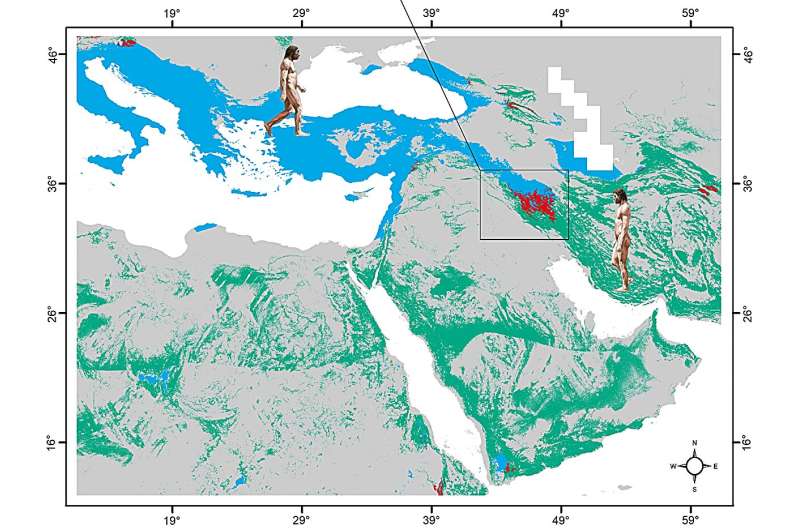September 9, 2024 report
This article has been reviewed according to Science X's editorial process and policies. Editors have highlighted the following attributes while ensuring the content's credibility:
fact-checked
peer-reviewed publication
trusted source
proofread
Archaeologists discover a likely place for Neanderthal and Homo sapiens interbreeding

A small team of archaeologists, two from Germany, one from Denmark and another from Iran, has identified a potential region for interbreeding between Neanderthals and Homo sapiens during the Late Pleistocene.
In their paper published in the journal Scientific Reports, the group describes how they used ecological niche modeling and a geographic information system to identify the locations of Neanderthals and Homo sapiens living in parts of Southeast Europe and Southwest Asia and the places where they most likely interacted.
Prior research has shown that interbreeding occurred between Neanderthal and Homo sapiens populations—Neanderthal DNA has been found in the genome of modern humans. What is still not known is where the interbreeding occurred.
For this new study, the team has used a variety of sources to pin down one of the most likely regions for interacting, and thus interbreeding to occur.
After studying the geographical distribution of both Neanderthal and Homo sapiens during the time period, it is believed they comingled, and the researchers narrowed down the list of possible places to just one region—the Zagros Mountains on the Persian Plateau. In modern times, the mountain range stretches from Iran to northern parts of Iraq and into southeastern Turkey.
Prior research has shown that the region would have been ideal for the Neanderthals living there; its biodiversity and varied topology and warm weather would have made for a good standard of living. It also would have been in the path of Homo sapiens as they migrated out of Africa, right around the time that Neanderthals were still living there, setting up the likelihood of the two meeting.
Notably, the region has also been found to be a treasure trove for both Neanderthal and Homo sapiens skeletons. It is also the place where the Neanderthal "flower burial" was discovered. The region has also been found to be one of the major pathways that Homo sapiens took when they began moving out of Africa.
The research team suggests it would have been very surprising if the two groups had not run into each other. And because of that, it seems equally likely that the two would have interbred.
More information: Saman H. Guran et al, Reconstructing contact and a potential interbreeding geographical zone between Neanderthals and anatomically modern humans, Scientific Reports (2024). DOI: 10.1038/s41598-024-70206-y
Journal information: Scientific Reports
© 2024 Science X Network





















